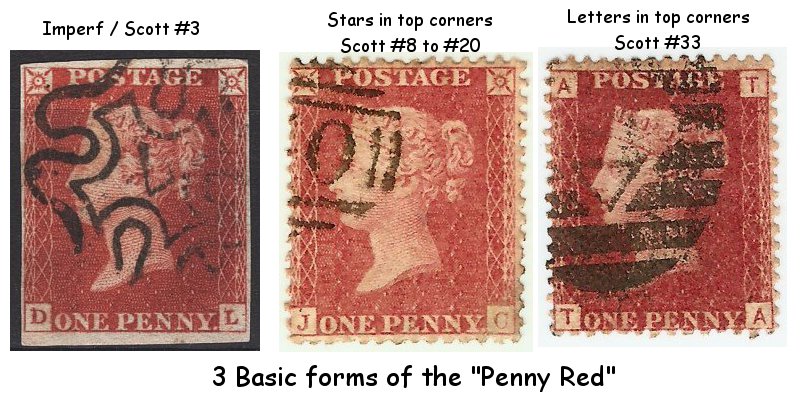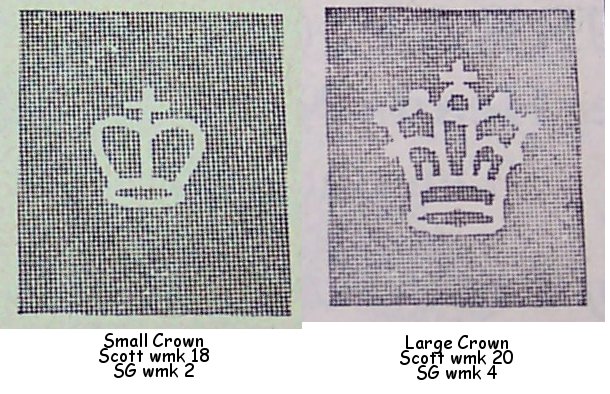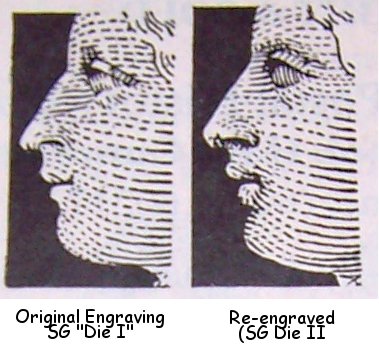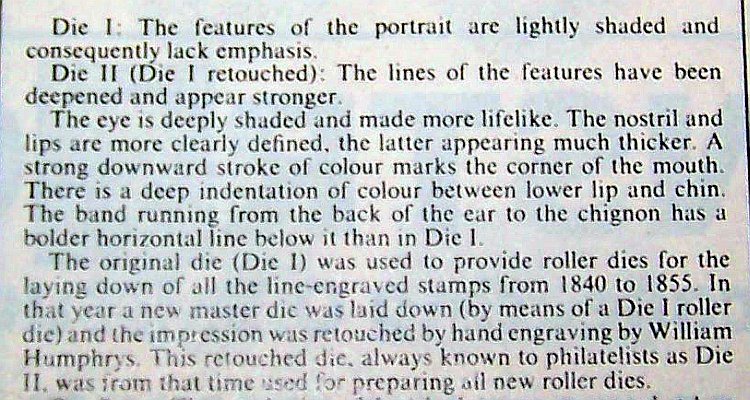Here are the three basic types:

In my mind, if you have had a problem with these issues, it is not you, it Is the catalogue's fault! They seem to go higgly piggly all over the place -- but there is an underlying logic that can streamline identification.
The "set" has 4 basic properties, which show up in various combinations. If we pursue the properties in a logical order, everything becomes easy. These properties are:
Perforation : Either 14 or 16
Watermark: Either small crown (Scott wmk 18 = SG wmk 2) or Large crown (Sc wmk 20 = SG wmk 4) (See below)
Die : either original (equals SG die I) or re-engraved ( equals SG Die II) (See below)
Paper : either white or bluish (with varying depth of blue)
(SG means "Stanley Gibbons catalogue").
Sounds complicated, but it's not! Here's a useful ID table:

Next is the watermark: Small crown (18) or large crown (20)? Now you are down to 2 choices! Now the final narrowing down to one stamp may depend on either re-engraved or not, or bluish paper or not, but never both.
For example: Lets say your stamp is perf 16, wmk 20 (large crown). Only two choices for that combo, both of which are re-engraved -- either white (Scott #14) or bluish paper (Scott #18). Could it be much easier?
How about: perf 14, wmk 18 (small crown). Now you will see two choices again, both on bluish paper - the original die, and the re-engraved. Pull out your 10x magnifier and check the face -- that's it!
Here is the "close-up stuff" you are going to need:



Note that I have ignored the Scott sub-numbers ("a", "b"). These are mostly colour shades. Gibbons gives most of these colour shades major numbers. That's why one Scott number translates to as many as 6 Gibbons numbers. In my mind, it is a great error for a novice collector to concentrate on colour for identification. Colours change over time. The red pigment in these stamps contains iron, and is subject to oxidation (rust). Frequently, there are many printings that are slightly different in colour, but are considered still be be colour "A", whereas to the novice, he/she sees a slightly different colour and thinks "one of them MUST be the better shade!". -- not so! Colours are best left to long experience, or verification by experts. (This is the subject of a whole 'nother tutorial). If you have never actually seen a correctly identified "orange red" vs. a "brick red" vs a "red brown", don't believe for a minute that you can tell the difference from word descriptions!
Now attack your penny reds! I hope this tutorial will make it easier for you.
